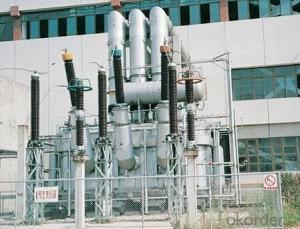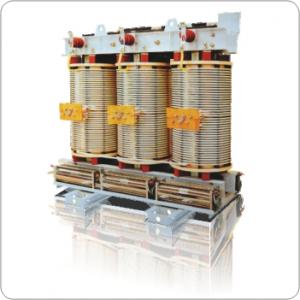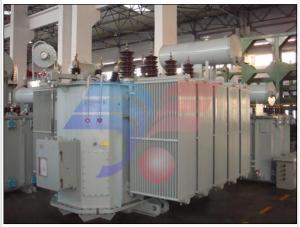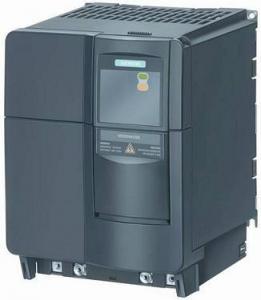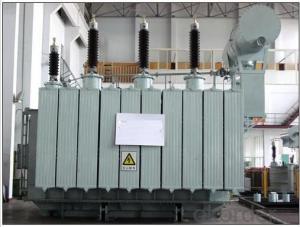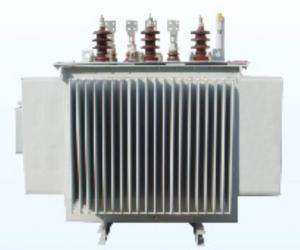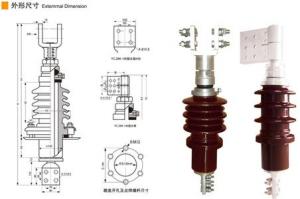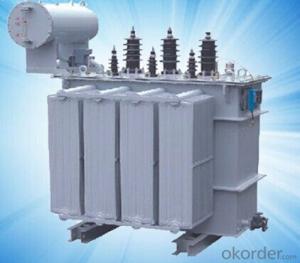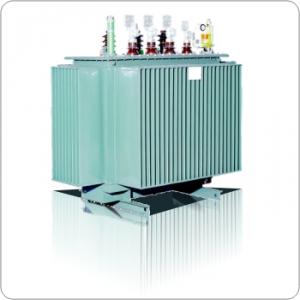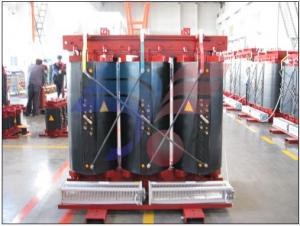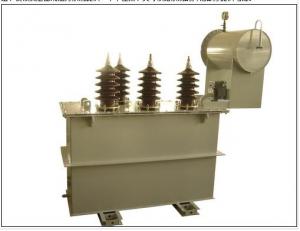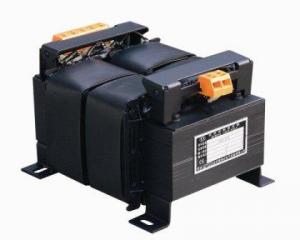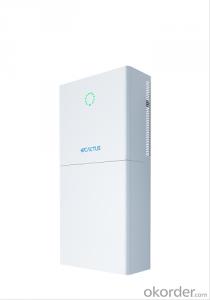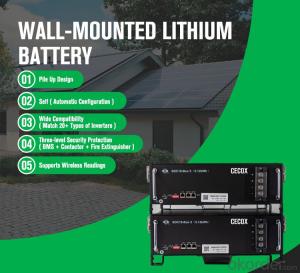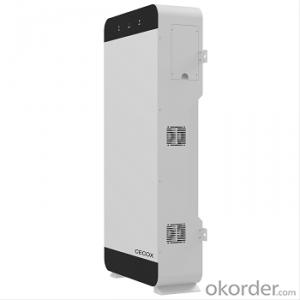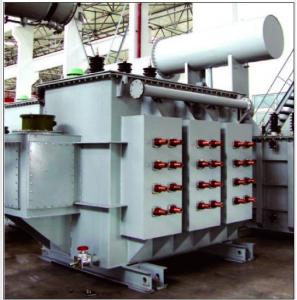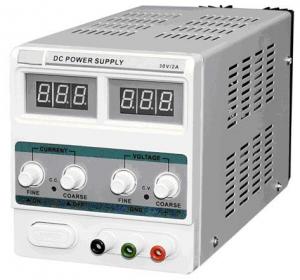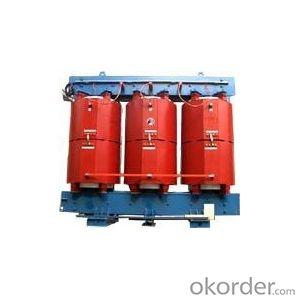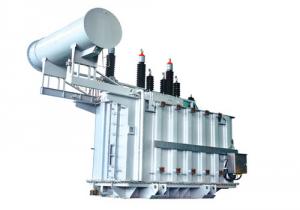400MVA/220kV main transformer power plant
- Loading Port:
- Tianjin
- Payment Terms:
- TT OR LC
- Min Order Qty:
- 1 pc
- Supply Capability:
- 1 pc/month
OKorder Service Pledge
OKorder Financial Service
You Might Also Like
Quick Details
| Place of Origin: | HeBei | Brand Name: | CNBM | Model Number: |
|
| Usage: | Power | Phase: | one | Coil Structure: | Toroidal |
| Coil Number: | 2 Winding | Capacity: | Rated Voltage: | 400MVA/220kV | |
| Connection Symbol: | YNd11 Dyn11 YNyn0d11 | Tank: | Cover type or Bell type | OLTC: | MR or ABB or SMS |
Packaging & Delivery
| Packaging Detail: | Mainbody --naked Disassembled parts -- crate |
| Delivery Detail: | 3 months |
Specifications
1. CESI certificate
2. High short-circuit withstand
3. Low loss, PD and noise
4. CTQC certificate
5. No leakage
Description
The application of 400MVA/220kVmain transformer power plant can significantly improve the economy of the OLTC substation, and matches well with the transmission capacity of OLTC lines, which has wide prospect of application. Because of its large capacity and large volume, the whole transportation weight with nitrogen is about 470-490 tons, and due to the restricted transport conditions, the transportation becomes the critical issue for 400MVA/220kV main transformer power plant. In order to make the products applicable to any OLTC substation in our country, the state grid of corporation of China set the "A study of easy-transport large capacity OLTC Transformer” as a key scientific research projects, and entrusted BTW to carry out the research.
During the process of research and development, BTW adopted the advanced design technology and modular design, the transformer can be transported disassembly and with advantages of compact core and winding body, less transportation weight and low transportation cost, effectively solves the need of OLTC construction in the transportation restricted areas. By using the most advanced 3D magnetic field calculation software, BTW performed detailed analysis and calculation for the magnetic flux leakage and eddy current loss of the transformer coil, iron core and oil tank steel structures. Besides, by using of the advanced electric field calculation software, BTW performed detailed analysis and calculation of main longitudinal insulation, and mastered the arrangement of the main longitudinal insulation of large capacity OLTCtransformer and the control of distribution of winding magnetic flux leakage. All of which make the products with low loss, low noise, small volume, strong anti short circuit ability, no local overheating and other significant advantages, and guarantee the long-term safe and stable operation.
The world's first on-site assembled large capacity OLTC Transformer’s right at the first time once again filled the gap in the field of OLTC transformer research after Chinese transformer industry overcame the difficulty of integral transport of 400MVA/220kV main transformer power plant, which marks BTW has fully occupied the world transformer industry technical peak. The successful development of the product filled the gaps in the domestic technology and met the urgent need of OLTCconstruction application in our country, greatly improved the technical level and manufacturing ability of BTW in terms of OLTC Transformer products.
- Q:I hate feeling the need to justify myself, but I've seen a lot of answers telling askers to do their own homework. I'm trying to do so, but can't find any equations in the book relating power to voltage as well as turn number. Is it PviN? I've just seen Pvi, but that wouldn't apply to multiple loops. This is for ideal transformers by the way, so power for the secondary and primary coils is the same right? But are their vi's equal, or their viN's?The primary coil of a transformer has 200 turns and the secondary coil has 800 turns. The power supplied to the primary coil is 400 watts. What is the power generated in the secondary coil if it is terminated by a 20-ohm resistor?
- The turns ratio is 4:1 of the primary. The power supplied to the primary is 400W. So regardless of anything else, in a ideal transformer, 400W is available on the secondary. But voltage will be 4x higher, current 4x smaller, than the voltage and current in the primary. Disregarding all that, if there is 400W of power flowing in the primary, then 400W will be being dissipated in the 20 ohm resistor. Watts in watts out, but secondary load (resistance) controls the wattage. There is no way to tell the output voltage and current, without knowing the input voltage and current. But whatever they are, the product of voltage x current will be 400W, in this instance.
- Q:Can a transformer alone be used for amplifying audio signals ? If yes how ?
- Transformers are AC (alternate current) devices and if 60 Hz is supplied to the primary windings 60 Hz will be produced at the secondary terminal. The transformers transform voltage and current at the primary to voltage and current at the secondary by magnetizing a mass of iron in their cores. The magnetic cores may not respond efficiently to very high frequencies (transmission frequencies) but might respond to audio frequencies (loud speakers employ magnets and coils of wire). If a suitable audio signal was applied to the primary coil a transformer might be used to step up or step down the voltage of the supplied signal while reversing its phase, however power (P EI) would remain nearly constant.
- Q:how low voltage smelting transformer can be modified to a higher voltage to be used in ferronickel production
- You need to provide more information about the original use of the transformer. Nickel smelting is a very specialized application that calls for a 'submerged arc'. Basically, the arc is fairly short and will essentially be submerged in a layer of slag on top of the molten material. It is a semi-continuous process in that periodically, some of molten nickel is poured off. The stream of molten nickel is blasted with water that causes the nickel to solidify into small pellets. Steel melting furnaces, by contrast, involve a much longer arc. The slag layer in the furnace is much thinner, and much of the arc is above the slag. It is a batch process in that once the 'campaign' has been completed, the entire melt is 'tapped' - poured into a tundish either to be cast into ingots or to feed a continuous casting process to make billets, slabs or even plates. There are other smelting processes for other materials - for example, silicon is produced via a smelting process. I would guess that if the voltage requirements of the nickel smelting process are different from the requirements of the original utilization, then it would be necessary that the transformer be redesigned and rewound - something that I would not expect to be very practical.
- Q:I live in US and I will move to my home country where 240V is supplied in the power sockets.I'm planning to ship my computer, LCD TV, speakers, game console, etc. and buy a power transformer. However, I'm afraid the power loss in the transformer will raise my electric bill so in the long run, it's not worth it to ship my electrical appliances.So how much is the typical power loss in a 120/240V step up transformer? The range of efficiency would help.
- It is only about 5 to 10 per cent power loss and the range of efficiency is 90 to 95 per cent.
- Q:How does a step down transformer decrease the output voltage but increases the output current? And how does the step up transformer does the opposite thing?
- Transformers function as electrical gearboxes to give an analogy. The product of current through the winding and voltage across the winding is the same for both the input winding and the output winding, due to conservation of energy. Transformers trade voltage for current, while, if ideal, preserving transferred power. The way a transformer works, is that when there is a changing magnetic field produced by the input winding (due to a derivative of current through this winding) induces a voltage across the output winding, as per Faraday's law of induction. Because of the self-inductance of the input winding, since it is after all an inductor, the voltages across both windings are both in phase. The higher the frequency used, the better and more efficient the transformer works. To make them work at lower frequencies, it is necessary to make bigger overall windings with larger inductance values. The stepping ratio is set by the number of coils of wire in both windings. The number of coils on the output winding divided by the number of coils on the input winding gives the stepping ratio. Should the stepping ratio be greater than 1, it is a step-up transformer. Should the stepping ratio be less than 1, it is a step-down transformer. Should the stepping ratio be equal to 1, it is called an isolating transformer.
- Q:How many transformers are used in a hundred households?
- In accordance with the current design standards, high-end community, each household 30kW; mid-range community, each household 15kW; ordinary community, each household 6kW.
- Q:Transformer capacity unit KVA? Transformer capacity unit KVA is how is it? 10KVA transformer, the maximum number of KW can be connected to electrical appliances? Supplementary - 2006-07-27 10:00:32 30KVA transformer, the maximum number of KW can be connected to electrical appliances? We plan to rent a workshop, there are power 380V, transformer capacity 30KVA. I want to install an electric furnace 75KW, welding machine 53KW, there are other small power appliances. Transformer capacity enough? I am full of transformer on the layman, please explain in detail, do not rhetoric.
- What is the difference between kv, kva and mva? The kilovolt ampere (kVA) is the power measurement standard that is 1 kilovolt ampere. KVA is equivalent to the current in a circuit generated by the voltage of that line, usually measured in the transformer, that is he is a current unit. And kilowatts refers to the power of an electrical, that is, the power of the unit. The rated capacity represents the guaranteed value of the transformer output power under rated operating conditions and is the apparent power of the transformer. That is, the maximum output power of the transformer capacity, the transformer can not be the actual output power and capacity to be confused. The units are voltammetry (VA), kVA, and MVA.
- Q:I have a question can someone explain why transformers get hot in use and why must they not be allowed to get too hot
- Simple explanation: a transformer can actually be modeled as an LRC circuit where the L is in series with the R and are both in parallel with the C. L is the inductance R represents the lossyness of the inductor and C represents the capcaitance between the turns. The heat comes from the loss of power through the resistance of the coil. and this lossyness can be described by the Q (quality factor) of the inductor. Q can be described as w(Total Stored Energy/Avg power dissipated) here w is the operating frequency.
- Q:I love the Transformers movies and games to death, but I've never ever been able to like the cartoons.I know they were somewhat popular, especially as the first Transformers game was a huge successplease add why you like/dislike it.thanks in advance
- I hated the old transformers cartoon movie with a passion. Mainly cause my ex used to watch it over and over and over again, and Cry at the optimus part every freakin time. By the time we broke up, I wanted all transformers things to die. I'm recovering slowly.
1. Manufacturer Overview |
|
|---|---|
| Location | |
| Year Established | |
| Annual Output Value | |
| Main Markets | |
| Company Certifications | |
2. Manufacturer Certificates |
|
|---|---|
| a) Certification Name | |
| Range | |
| Reference | |
| Validity Period | |
3. Manufacturer Capability |
|
|---|---|
| a)Trade Capacity | |
| Nearest Port | |
| Export Percentage | |
| No.of Employees in Trade Department | |
| Language Spoken: | |
| b)Factory Information | |
| Factory Size: | |
| No. of Production Lines | |
| Contract Manufacturing | |
| Product Price Range | |
Send your message to us
400MVA/220kV main transformer power plant
- Loading Port:
- Tianjin
- Payment Terms:
- TT OR LC
- Min Order Qty:
- 1 pc
- Supply Capability:
- 1 pc/month
OKorder Service Pledge
OKorder Financial Service
Similar products
New products
Hot products
Hot Searches
Related keywords
